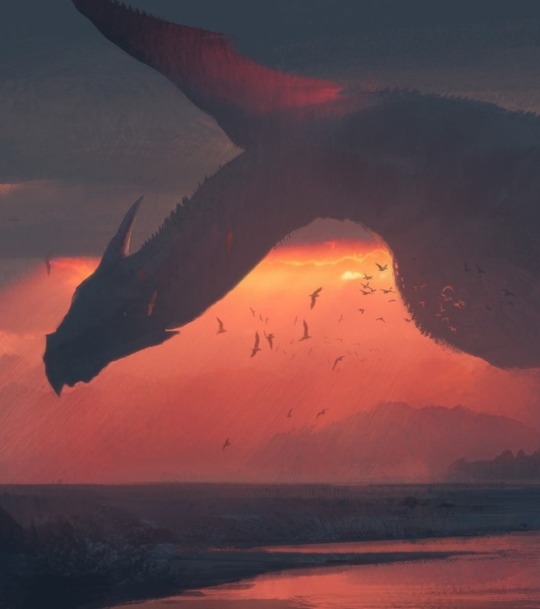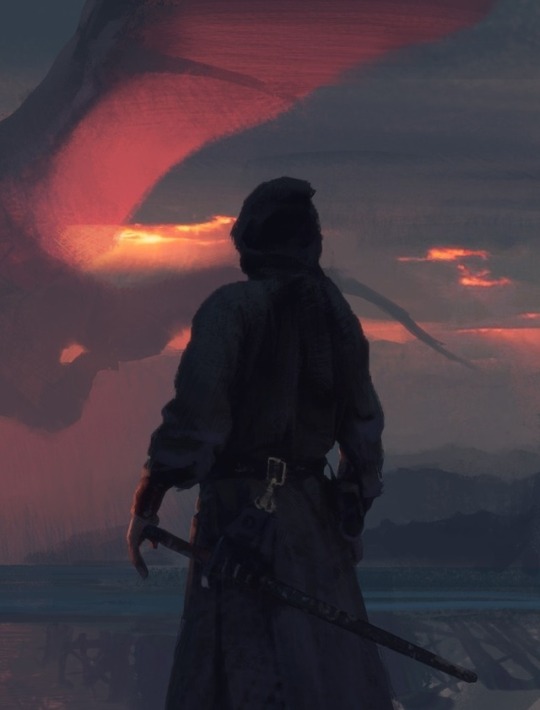Text
“Dragon” is such a vague category of creature with such a ridiculous diversity of bauplans. It doesn’t matter how big it is or how many legs it has or whether it has wings or not: you can call it a dragon if it is kind of snakey, and/or breathes fire (virtually anything that can breathe fire has the potential to qualify as a dragon).
Case in point, look at all these different things that are dragons:
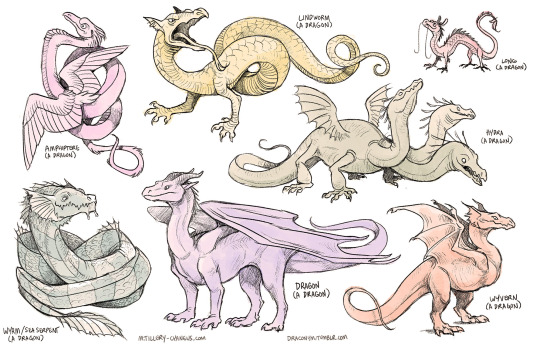
52K notes
·
View notes
Text
How Magic Works

These are just some of many different theories about how spells work. For anybody who really enjoys “magical theory” like I do or is looking for validation that there’s something to all these weird spells! None of these serve to discredit magic, but rather add a deeper level of understanding to it. The success of a spell could be credited to more than one of these, or something else entirely!
Law of Attraction. Basically, the idea that you attract what you focus on. A popular example is focusing on the color red, and seeing how much red is around you that you didn’t notice before. This is most effective for spells involving personal matters and success, by formally opening your eyes to details and opportunities you may have missed otherwise.
The Placebo Effect. It’s a proven fact that our bodies can heal ourselves merely by belief that what we’re doing helps! This can extend beyond health spells to things like confidence, performance ability, and other things that aim at personal improvement. The placebo effect may be all that spell needs to be successful ( and it wouldn’t have happened without the spell!)
Direct cause/effect. Something about the spell and the way it was cast directly affects the outcome. Example: a sigil designed for protection, when looked at, serves as a constant visual reminder that you are protected, subconsciously strengthening your wards.
Science/chemistry. This is most true for kitchen witchery and herbalism. Chamomile, lavender, and other herbs aren’t corresponded with calmness and sleep for nothing… they’re made up of chemicals that have been scientifically proven to calm the nerves and aid in sleep!
Quantum physics. There’s a phrase called “Quantum Woo,” where people use quantum physics (often incorrectly) to explain any type of magical thinking or practice. While the ultimate theory behind quantum physics was recently disproven, the discoveries made through research still hold true. Basically, we know particles behave differently when observed, and our energies can effect this. We just don’t know why that is. This is the baseline behind a lot of energy work.
Divine string pulling. Ask and ye shall receive. This is where we depart from the physical to the spiritual side of magic. Many people do magic by appealing to divine forces, Mother Earth, God(s), the Universe, whatever you want to call it. This could be with an offering, a ceremony, or even just bedside prayer. The divine force hears the request, and grants it by affecting change and “pulling strings” to cause the desired outcome.
Spiritual string pulling. Very similar to the previous point, but with entities that are not worshipped or seen as divine. Many believe that spirits can still affect change “behind the scenes.” A spirit worker may make a deal with a spirit for luck or protection, or someone may ask their ancestors for good fortune and health.
Personal string pulling. Instead of asking an outside entity, this is the idea that we, as the practitioner, pull the strings. This is most seen through the “cone of energy” method of casting, where we raise a lot of concentrated energy and intent in a space, then release it all at once to do its thing. You also see it with sympathetic magic, where by doing something to a poppet, we actively affect that change on the target. No middle man included.
19K notes
·
View notes
Text
Okay guys, for writing/general reference, a bit about what a ‘blacksmith’ is and isn’t:
A blacksmith is a generalist, a person who uses tools and fire to work iron. Some blacksmiths work more specifically, so you get, say, an architectural blacksmith, who focuses more or less exclusively on things like gates, rails, fences, or an artist blacksmith, who makes wacky sculptures or what have you. These days, though, that’s a pretty blurry line. ‘Blacksmith’ is a pretty damn broad term, but it’s nowhere near broad enough to cover everything encompassed in ‘metalworker’, which is how I often see it used. There are a LOT of different skills for working metal, and no one knows them all. Some other terms:
A farrier shoes horses. They may make the shoes, or they may buy them and then size them, but they actually do the shoeing. Unless the blacksmith is also a farrier, they don’t know shit about horses’ hooves and are not qualified to deal with them and probably don’t want to.
A blacksmith works IRON, usually almost exclusively. They might work with bronze or do a bit of brazing, but those are really separate skillsets. If you work, say, tin and/or pewter, you are in fact a whitesmith. You could also be a silversmith or a coppersmith, and so on.
Knifemakers and swordsmiths have their own highly specialized and fairly complex specialties, and usually a blacksmith wouldn’t mess with that unless they want to pick up a new skillset or if they’re really the only game going for a long way around. By the same token, a swordsmith might never have learned the more general blacksmithing skills. They’re not the same thing is what I’m trying to say here. Likewise armorers. There’s overlap but it’s not the same thing.
If you make metal items via molds and casting, you work at a foundry and are a foundryman.
Look, when metalworkers and individual shops and masters were the height of industry, this shit got REALLY specific. There were people who spent their whole lives making pins. Just pins. Foundries specialized and made only bells, only cannon, only cauldrons, etc. This is scratching the surface, I just wanted to make the point that ‘blacksmith’ is not the same thing as ‘magical muscly person who knows how to do everything related to metal’.
52K notes
·
View notes
Photo

“A deep-sea Chimaera. Chimaera’s are most closely related to sharks, although their evolutionary lineage branched off from sharks nearly 400 million years ago, and they have remained an isolated group ever since. Like sharks, chimaera’s are cartilaginous and have no real bones. The lateral lines running across this chimaera are mechano-receptors that detect pressure waves (just like ears). The dotted-looking lines on the frontal portion of the face (near the mouth) are ampullae de lorenzini and they detect perturbations in electrical fields generated by living organisms.”
(by NOAA Ocean Explorer)
2K notes
·
View notes
Text
I am a(n):
⚪ Male
⚪ Female
🔘 Writer
Looking for
⚪ Boyfriend
⚪ Girlfriend
🔘 An incredibly specific word that I can’t remember
408K notes
·
View notes
Photo

Simply a Paradise ❥
San Martín de Los Andes, Neuquén, Argentina.
1K notes
·
View notes
Photo

archivist - ao3 inspired projects page
preview / code
posted a preview shot of this page awhile back on my writeblr - sorry it’s taken me a million years to post it!
features: pretty straightforward page, include as many projects as you’d like! originally created with writeblrs in mind, but could be used for anything. icons work great for project images (icons in preview by @alydae)
changeable accent color
change sidebar links to whatever you want
themes section can also be used as project links
stats section
pls don’t remove credit!
would appreciate a like/reblog if you plan to use this page! and pls message me if you have any questions or find any bugs. :)
2K notes
·
View notes
Photo

Valley of Tears
Sigöldugljúfur, Iceland
by Iurie Belegurschi
4K notes
·
View notes
Text
Unlike ocean mermaids who have plenty of room to grow their hair, freshwater mermaids prefer shorter styles similar to humans; because of their close proximity to the surface, “freshies” may also be seen wearing hats to block out sunlight and peek out from the water like alligators.
Additionally, due to their small size in even smaller environments like lakes and rivers, freshwater mermaids prefer human speech for communication over the whale-like humming used by their ocean relatives to speak.
Abyssal mermaid, humming: [Hello cousin…!]
River mermaid, tipping their seashell cowboy hat: HOWDY
60K notes
·
View notes
Text
More inadvisable D&D dragons:
Fractal Dragon: Exhales two smaller copies of itself. Use the stat block for the next age category down for the copies. For example, an ancient fractal dragon exhales two copies that use the adult fractal dragon stat block; each copy can in turn exhale two copies that use the young fractal dragon stat block; and so forth. The copies disappear after one minute or when reduced to zero hit points, like summoned monsters.
Reverse Dragon: Has no breath weapon of its own; instead, every other creature of size category Small or larger within 120 feet of the reverse dragon is granted a breath weapon of the appropriate type. Consult the stat block for a wyrmling of the reverse dragon’s colour to determine the granted breath weapon’s traits, including damage, saving throw DC, and recharge interval.
Microdragon: Has the game-mechanical traits of an adult dragon, but is only six inches long. Takes advantage of the fact that the mayhem it’s capable of causing is so wildly out of scale with its stature to hide in plain sight; most communities it targets have no idea what’s causing the destruction because nobody can see the dragon amid the chaos. (In game terms, the microdragon’s breath weapon does not break stealth, since the area of effect is too large to give away its precise location.)
Inconspicuous Dragon: Exhales a mind-altering gas that causes those affected to not notice that it’s a dragon. This effect lasts for as long as they remain in the dragon’s presence. None of the dragon’s traits are actually altered, but affected parties will tend to rationalise any feats that would be inconsistent with not being a dragon. Additional saving throws may be warranted in the case of actions that are exceptionally hard to explain.
Gun Dragon: A dragon with a shotgun. Treat the shotgun as a standard breath weapon that inflicts piercing damage, except it doesn’t have a recharge interval; rather, the dragon must spend an action reloading.
4K notes
·
View notes
Text
日三 秋 (yí rì sān qiū): Literally, “one day, three autumns,” this expression implies that you love someone so much that every day without them seems to last 3 years.
Mångata (Swedish) This beautiful Swedish word refers to the road-like reflection of the moon on the water. It's the long, wavy shape that appears across the water when the moon is shining on it. It is made up of the prefixes "Måne" meaning moon, and "gata" meaning street/road. For this reason, it is sometimes indirectly translated as "moon-path," "moon-river," "moon-track," or "moon-wake."
Ya'aburnee (Arabic) While the Arabic word ya'aburnee literally means "you bury me," the concept it represents goes far deeper than that (no pun intended). Ya'aburnee is a way to declare your hope that your loved one will outlive you because of how unbearable it would be to live without them. It is a gorgeous, painful expression of desire to spare yourself the pain of a life without a person you love.
Vladimir Nabokov described the word better than anyone else could ever hope to: “No single word in English renders all the shades of toska. At its deepest and most painful, it is a sensation of great spiritual anguish, often without any specific cause. At less morbid levels it is a dull ache of the soul, a longing with nothing to long for, a sick pining, a vague restlessness, mental throes, yearning. In particular cases it may be the desire for somebody of something specific, nostalgia, love-sickness. At the lowest level it grades into ennui, boredom.”
Common feeble attempts at an English translation include such words as depression, yearning, boredom, and nostalgia. The problem with these translations is that toska means all of those things simultaneously. It’s not that this word has separate meanings according to the situation, so much as it is the amalgamation of each of the given English translations.
0 notes
Text
D&D setting concept: a world where there exists a simple magic ritual, so simple a child can perform it, that allows you to plant a piece of just about anything in the ground and grow something related to whatever you planted. This relationship isn’t entirely predictable, and the resulting plants often have unusual needs – for example, a tree that grows horseshoes may need to be “fertilised” with iron ore – but it’s useful enough that it forms a major part of the setting’s industry. Planting pieces of mundane plants is of limited utility, as usually you end up with a copy of whatever you took the piece from, and pieces of people or animals almost always result in gnarly monsters of various sorts. (Except for sheep, oddly. Planting any part of a sheep just gets you another sheep, 100% of the time. Nobody knows why.)
2K notes
·
View notes
Text
peak fantasy environment designs:
floaty islands
glowing mushrooms
bigger versions of normal animals
animalistic dragons
deep, sentient forests
sky/space whales
276K notes
·
View notes
Photo



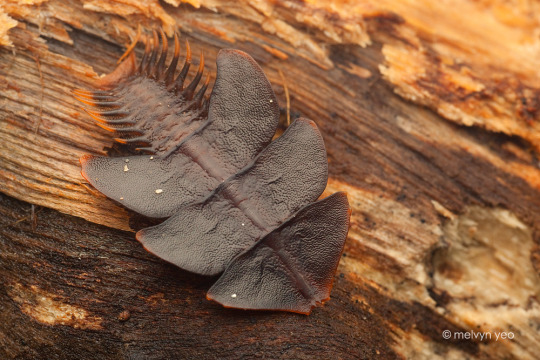

Read more about trilobite beetles and larva here!
Photos by melvynyeo
58K notes
·
View notes
Text
powdered donuts. and they have pants from their butterfly dad.

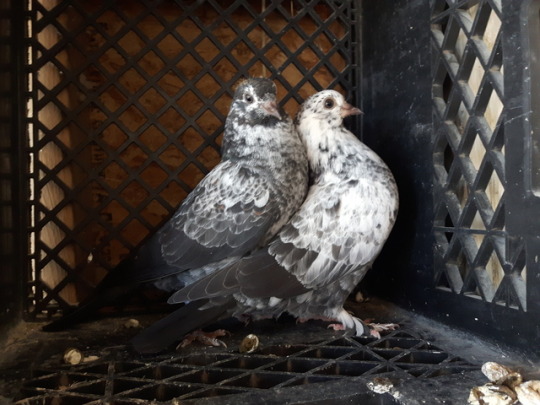
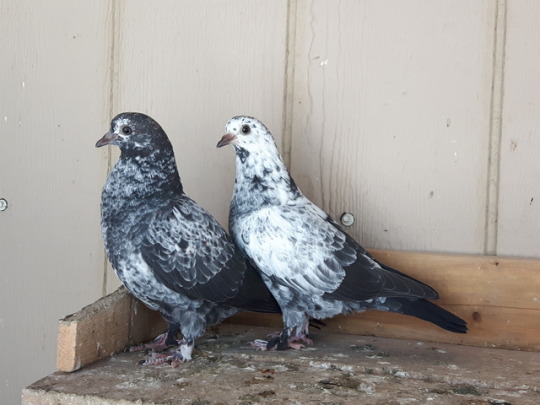
2K notes
·
View notes

